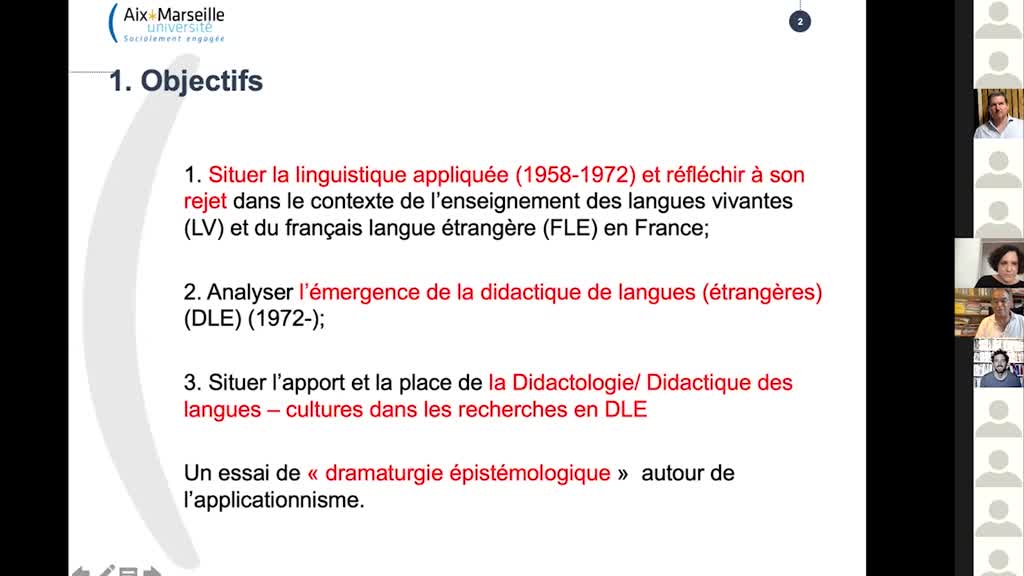Notice
Maxi Pauser - Tertiary Language Teaching and Learning principles: The Case of German L3 at Spanish Universities
- document 1 document 2 document 3
- niveau 1 niveau 2 niveau 3
Descriptif
In the last quarter of 20thcentury the communicative approach or communicative language teaching (CLT) hasbeen gaining importance and popularity at an accelerated rate in all Europeancountries. As a result, teaching of different foreign languages was oftencharacterized by strict separation. In English classes in Spain, for example,no Spanish (mother tongue) or French (second foreign language) could be spoken.In the 1990s it became increasingly apparent that there are quantitative andqualitative differences between the learning of a first foreign language andthe learning of a second. On the one hand bilinguals or students of a secondforeign language can benefit from their prior knowledge of languages whilelearning a third language (L3) or second foreign language. On the other hand, itis assumed that certain teaching strategies based on tertiary language teachingprinciples can maximize the effects of learning these third languages.
The plurilingualism of Spanishstudents learning German as a foreign language in Spanish higher educationcontexts is being considered one of multiple consequences of the complexglobalization process. As a result, it poses a new didactical challenge becauseit requires the introduction of teaching methods, which take into accountpreviously acquired language knowledges. The aim of this paper is to reveal howother languages of student’s prior language knowledge were taking intoconsideration during the language teaching process of a new language during theperiod 1945 – 2015 in different European contexts. It also reviews articles about languageteaching principles based on tertiary language didactics and shows how they canbe applied to German as an L3 in Spanish university contexts. The limits of thecommunicative approach are also to be discussed.
Bibliography
Cenoz, J.,Hufeisen, B. & Jessner, U. (eds.). 2001. Cross-linguistic Influence in Third LanguageAcquisition: Psycholinguistic Perspectives. Clevedon: Multilingual Matters.
Hufeisen, B.and Gerhard Neuner (eds.). 2004. The Plurilingualism Project: TertiaryLanguage Learning - German after English. Council of Europe Publishing.
Hufeisen, B. (2000). A European Perspective – Tertiary Languages with afocus on German as L3. In Handbook of Undergraduate Second LanguageEducation, Rosenthal, J. W. (ed.) (2000)
Neuner, G.The concept of plurilingualism and tertiary language didactics. In ThePlurilingualism Project: Tertiary Language Learning – German after English,Hufeisen, B. and G. Neuner (eds.), 13 – 34. Council of Europe Publishing.
Dans la même collection
-
Georges Daniel VERONIQUE - Contre l’applicationnisme linguistique, la Didactologie des langues-cult…
Le terme de linguistique appliquée émerge en Europe à la fin des années 50. En France, le Centre de Linguistique Appliquée de Besançon (CLAB) est créé en 1958. Une décennie de travaux en
-
Sarah Dietrich-Grappin et Jésabel Robin - La DDL en tant que discipline autonome ? Restitution disc…
La reconnaissance de la DDL en tant que discipline autonome est intrinsèquement liée à l’histoire des idées et des institutions.
-
Nicola MCLELLAND - The relationship between institutions, advocacy, research, policymaking, and lan…
This paper will explore the relationship of advocacy, policy-making and practice to the practice of language teaching and learning in the UK since 1945, in particular regarding how languages are
-
Jennifer Meier - The influence of the zeitgeist on the development of cultural learning in foreign …
Since the 19th century researchers have been investigating the question whether we need to learn about culture in the foreign language classroom or not (e.g., Volkmann 2010: 1), and it now seems
-
Sabine Doff - „With a little help from my friends …“ The dialogue between Foreign Language Educatio…
In the decades after World War II the academic landscape in Western Germany was changing slowly, yet profoundly. One major development was the academization of teacher education, i.e. the
-
Pistis Mfwa Croyance - Les français congolais au fil de l'histoire postcoloniale : quelle orientati…
Cette communication se propose de retracer l'histoire de la recherche en didactique du français en République Démocratique du Congo (Ex-Zaïre), partant du début des années soixante-dix (une époque
-
Alice Burrows et Clémentine Rubio - Vers une géopolitique des trajectoires enseignantes : circulati…
L’histoire de la circulation des enseignant.es et des étudiant.es est constitutive de la mise en place d’un champ du français langue étrangère (FLE) (Porcher, 1987). Les “stages de recyclage” du
-
Fontaine Béatrice - La place de l’émotion dans l’apprentissage des langues : quel cheminement en DD…
On s’interrogera, dans la contribution proposée, sur les liens entre la montée en force d’une approche communicative puis actionnelle en didactique des langues et la prise en compte d’aspects
-
Jésabel ROBIN - De la réception en Suisse alémanique de conceptions didactiques élaborées en France…
Les situations de didactique des langues sont des situations sociolinguistiques. (Blanchet, 2018, p.209) Explicitement ou implicitement, chaque contexte académique est régi par des
-
Ying Zhang-Colin et Mariarosaria Gianninoto - La didactique du chinois langue étrangère, entre « th…
S’il est vrai que la didactique du chinois langue étrangère (CLE) hérite d’une riche tradition philologique et pédagogique (Zhāng 2009), il a fallu néanmoins attendre les dernières décennies










![Ying Zhang-Colin et Mariarosaria Gianninoto - La didactique du chinois langue étrangère, entre « théorie d’ensemble et [théorie] des variables » : une réflexion historico-épistémologique](https://vod.canal-u.tv/videos/media/images/dynadiv/la.didactique.du.chinois.langue.etrang.re.entre.theorie.d.ensemble.et.theorie.des.variables.une.reflexion.historico.epistemologique.ying.zhang.colin.et.mariarosaria.gianninoto_62797/vignette.jpg)